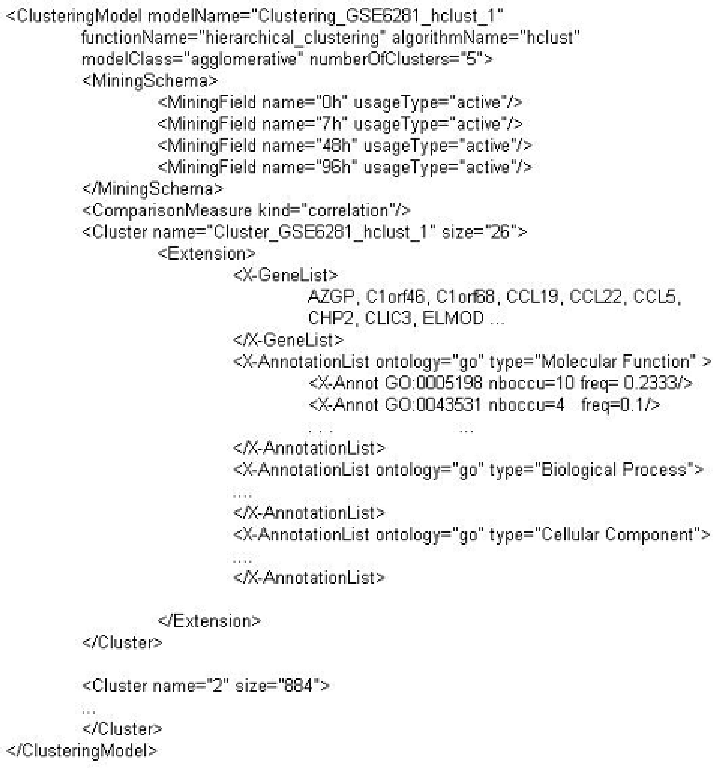Database Reference
In-Depth Information
Figure 8. Cluster extended PMML representation in AMI
metadata about scientific publications and links
documents to UMLS concepts.
the goal of MGED and OBI is to describe all the
design of an investigation (protocols and instrumen-
tation used, material used, data generated and kind
of analysis performed), while the goal of GEOnto
is to describe experimental conditions fitted for a
semantic search.
GEOnto includes a set of general concepts that
are applicable across various biological domains (in
vivo, inductor, subject, sample, etc.) and domain-
specific concepts that are relevant only to a given
domain. In a first step, we limit it to dermatology
(skin, eczema, contact dermatitis, etc.) but GEOnto
can be extended towards other biologic fields.
GEOnto
GEOnto (Gene Experiment Ontology) allows de-
scribing an overall micro-array experiments (e.g.
PubmedId, keywords...) and its experimental condi-
tions (exp. sample, treatment...). GEOnto concepts
are also defined in ontologies such as MGED or
OBI (mentioned in section “STANDARD META-
ANALYSES OF DNA MICRO-ARRAYS”), but
they are differently structured in GEOnto. Indeed,

Search WWH ::

Custom Search